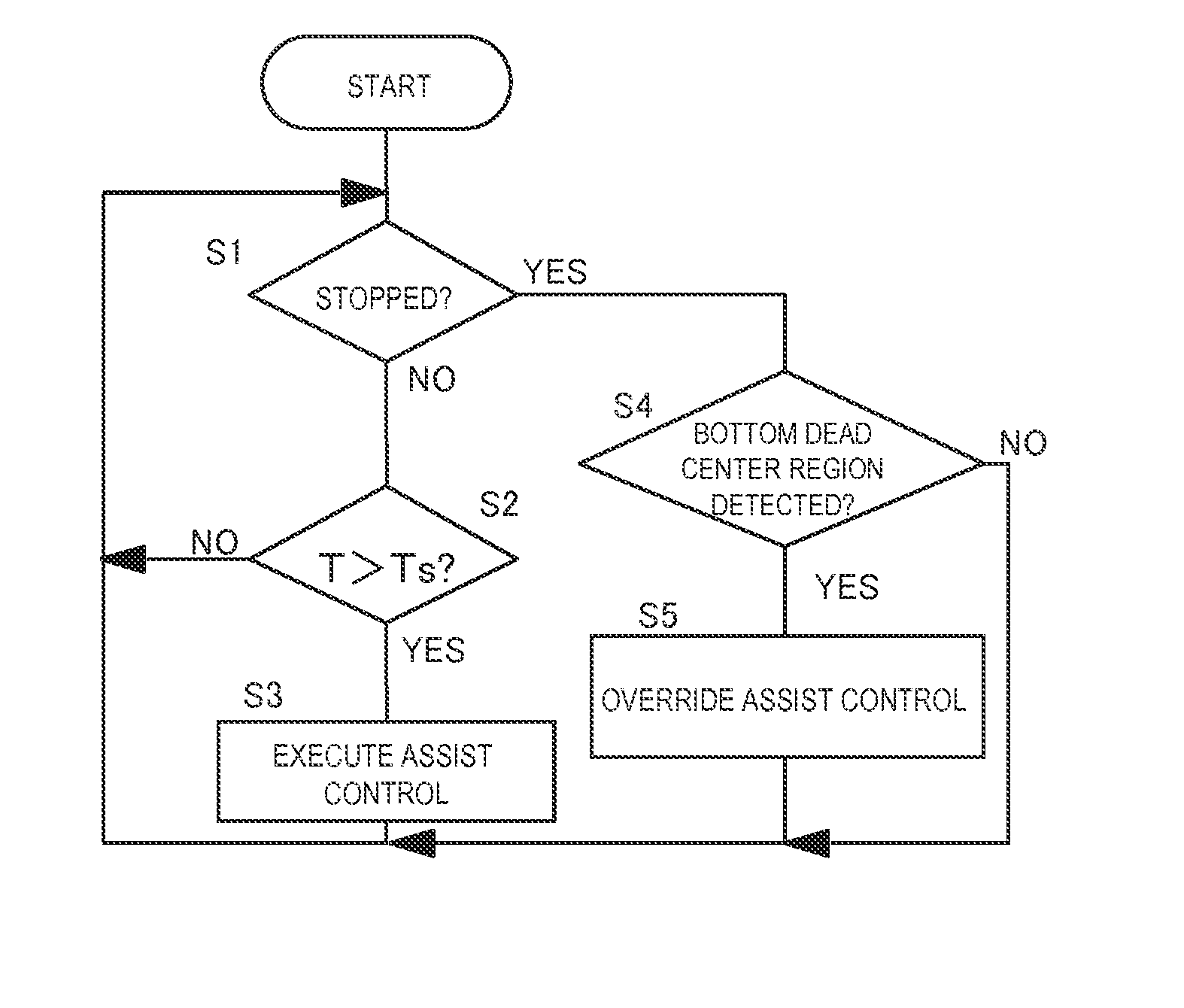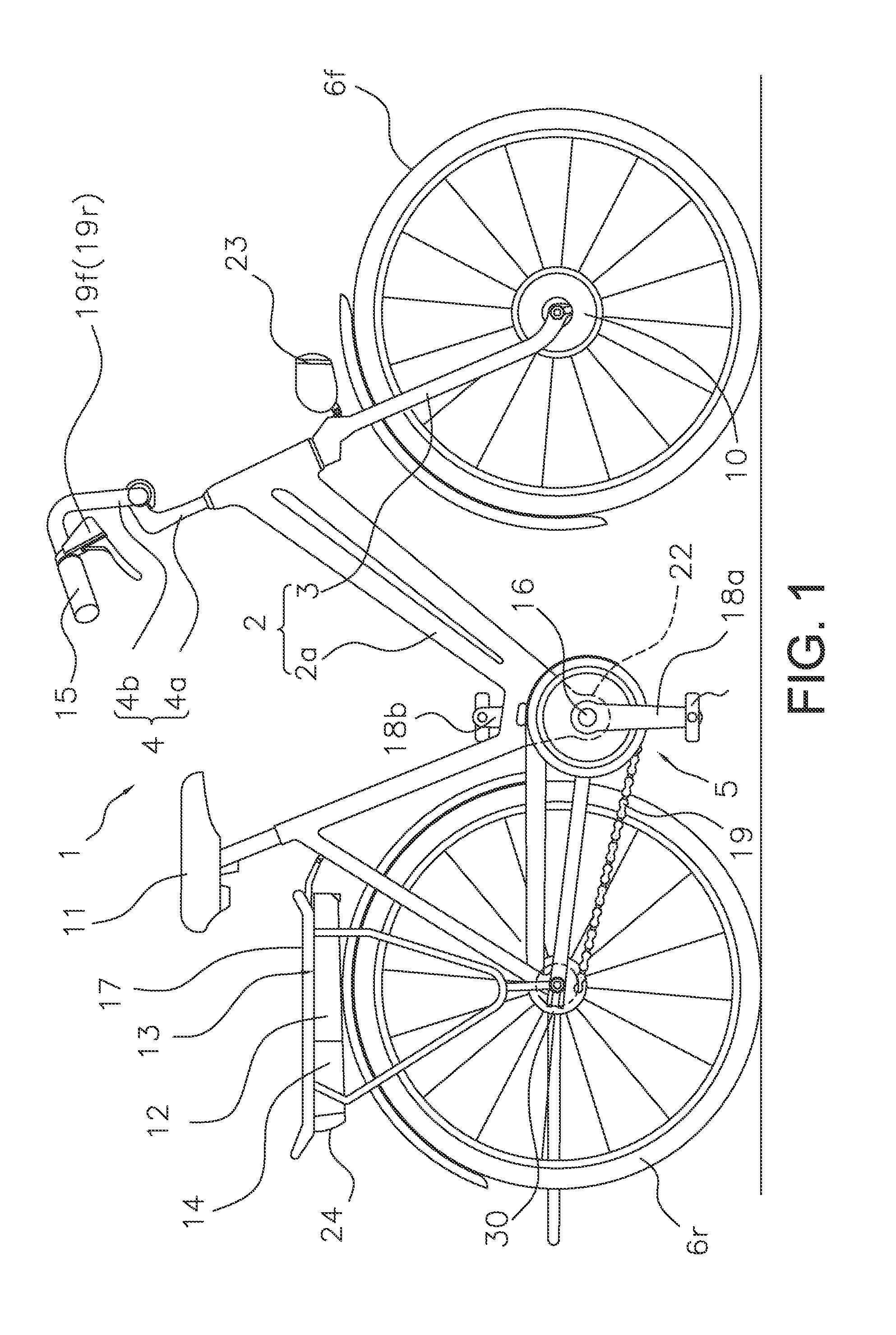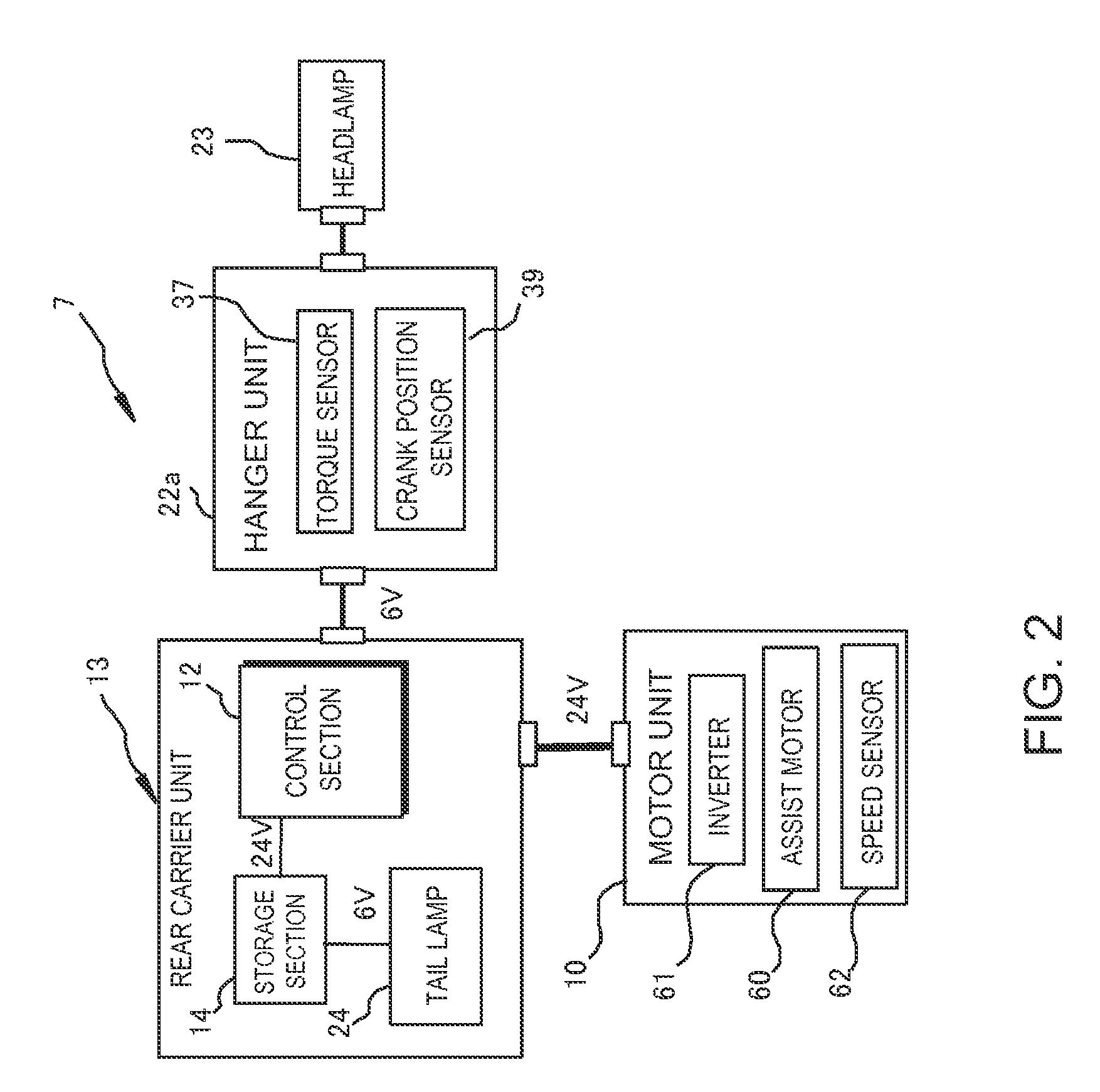Bicycle motor control apparatus
a motor control and bicycle technology, applied in the direction of vehicle position/course/altitude control, process and machine control, instruments, etc., can solve the problems of inconvenient control for the rider, inappropriate gear change operation, and inability to obtain assisting for
- Summary
- Abstract
- Description
- Claims
- Application Information
AI Technical Summary
Benefits of technology
Problems solved by technology
Method used
Image
Examples
first embodiment
[0032]Referring initially to FIG. 1, a bicycle 1 is illustrated with a bicycle motor control apparatus in accordance with a The bicycle is an electric powered bicycle configured to assist a rider by using a motor unit 10 to supplement a drive force (e.g., a pedaling force) imparted by the rider. The bicycle 1 includes a frame 2 having a frame body 2a and a front fork 3. As shown in FIG. 1, the front fork 3 is attached to a frontward portion of the frame body 2a such that it can pivot about a slanted axis. The bicycle 1 further includes a handlebar unit 4 attached to the upper end of the front fork 3 for steering the bicycle 1. The bicycle 1 further includes a drive train 5, a front wheel 6f, a rear wheel 6r, an electrical system 7 (see FIG. 2), a saddle 11, a headlamp 23 and a tail lamp 24. The drive train 5 includes a crank axle 16, a right crank 18a, a left crank 18b, a chain 19 and an internally geared hub 30. The bicycle 1 includes other conventional components such as a front ...
second embodiment
[0061]With the second embodiment, inappropriate gear change operations will not occur even if the right crank or the left crank is turned or rocked while inside the prescribed region α. As a result, the front gear changing motor 140f and the rear gear changing motor 140r of the external transmissions can be controlled appropriately in accordance with a riding technique used when starting the bicycle into motion.
[0062]Although embodiments of the present invention have been presented heretofore, the present invention is not limited to these embodiments and various modifications can be made without departing from the scope of the invention as defined by the claims.
[0063]Although in the previously explained embodiment the bicycle crank position sensor has a magnet and magnetic force detecting elements, the bicycle motor control apparatus is not limited to using such a crank position sensor. It is acceptable for the bicycle crank position sensor to be, for example, a sensor that can dete...
PUM
 Login to View More
Login to View More Abstract
Description
Claims
Application Information
 Login to View More
Login to View More - R&D
- Intellectual Property
- Life Sciences
- Materials
- Tech Scout
- Unparalleled Data Quality
- Higher Quality Content
- 60% Fewer Hallucinations
Browse by: Latest US Patents, China's latest patents, Technical Efficacy Thesaurus, Application Domain, Technology Topic, Popular Technical Reports.
© 2025 PatSnap. All rights reserved.Legal|Privacy policy|Modern Slavery Act Transparency Statement|Sitemap|About US| Contact US: help@patsnap.com



